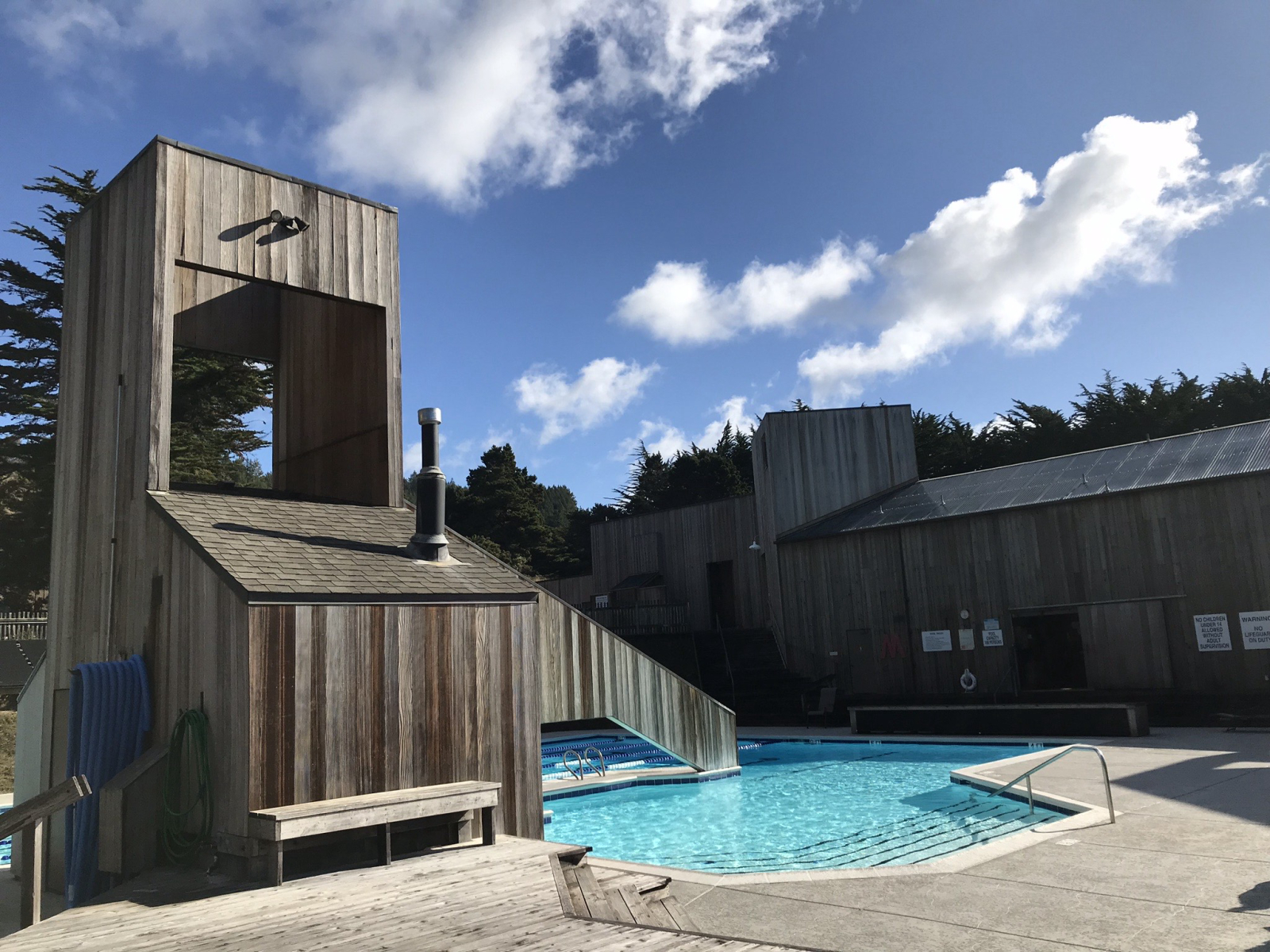How to Visit
Only open to Sea Ranch residents and vacation rental guests
Location
37405 Shoreline HighwaySea Ranch, CA, 95497


Sea Ranch Ohlson Recreation Center, Moore Lyndon Turnbull Whitaker (MLTW), Sea Ranch, CA, 1974.
Hannah Simonson

Sea Ranch, Ohlson Recreation Center
Hannah Simonson

Sea Ranch, Ohlson Recreation Center
Hannah Simonson
Only open to Sea Ranch residents and vacation rental guests

1974
The Sea Ranch community is well-known for its early environmentally sensitive and small-scale, site-adapted design and philosophy of “living lightly on the land.” While the first homes and community buildings were completed in the 1960s, the Ohlson Recreation Center, one of three at The Sea Ranch, was completed in 1974 by the architects of the original Condominium One building, Moore Lyndon Turnbull Whitaker (MLTW). The recreation center was built prior to the adoption of the California Coastal Act (1976), which required public coastal access and regulated land use and new construction along the coast, and was passed as a direct result of controversy surrounding the development of The Sea Ranch and privatization of coastal access.
The Ohlson Recreation Center utilizes a similar design vocabulary as the Moonraker Recreation Center (1963)—which is perhaps the better-known of The Sea Ranch rec centers as it features Barbara Stauffacher Solomon’s well-published supergraphic murals. Exemplary of the “Third Bay Tradition”—a regional idiom of Modernist design—the Ohlson Recreation Center features simple geometric forms, long sloping shed roofs, and natural wood materials. Like other examples of MLTW’s work at The Sea Ranch, the forms are inspired by local vernacular agricultural buildings, but in their simple exteriors belie complex interior spatial arrangements.
Ohlson Recreation Center has been in continuous use as a recreation center since its construction and includes an outdoor pool, tennis courts, and changing rooms. If you plan to rent a Sea Ranch house for vacation, make sure to get a guest pass for the Ohlson Recreation Center.